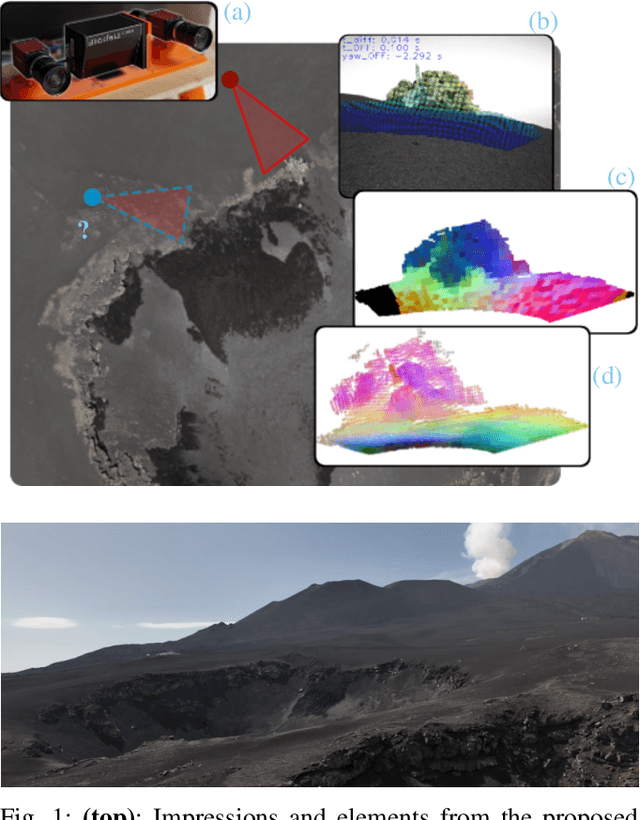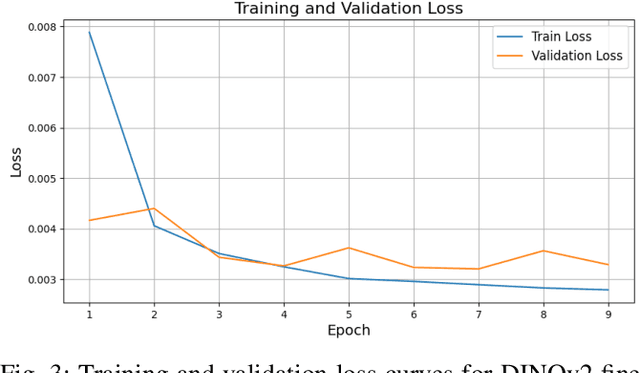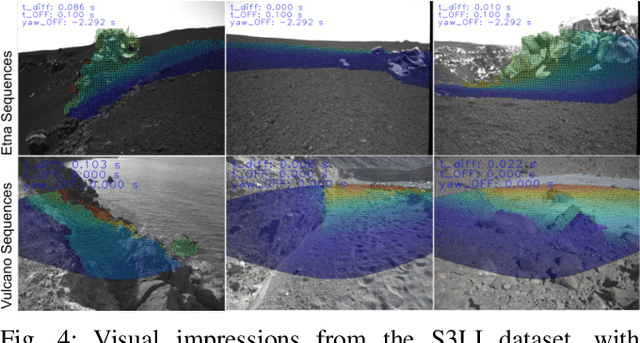Rudolph Triebel
Evaluating Latent Generative Paradigms for High-Fidelity 3D Shape Completion from a Single Depth Image
Nov 14, 2025Abstract:While generative models have seen significant adoption across a wide range of data modalities, including 3D data, a consensus on which model is best suited for which task has yet to be reached. Further, conditional information such as text and images to steer the generation process are frequently employed, whereas others, like partial 3D data, have not been thoroughly evaluated. In this work, we compare two of the most promising generative models--Denoising Diffusion Probabilistic Models and Autoregressive Causal Transformers--which we adapt for the tasks of generative shape modeling and completion. We conduct a thorough quantitative evaluation and comparison of both tasks, including a baseline discriminative model and an extensive ablation study. Our results show that (1) the diffusion model with continuous latents outperforms both the discriminative model and the autoregressive approach and delivers state-of-the-art performance on multi-modal shape completion from a single, noisy depth image under realistic conditions and (2) when compared on the same discrete latent space, the autoregressive model can match or exceed diffusion performance on these tasks.
Multi-modal Loop Closure Detection with Foundation Models in Severely Unstructured Environments
Nov 07, 2025



Abstract:Robust loop closure detection is a critical component of Simultaneous Localization and Mapping (SLAM) algorithms in GNSS-denied environments, such as in the context of planetary exploration. In these settings, visual place recognition often fails due to aliasing and weak textures, while LiDAR-based methods suffer from sparsity and ambiguity. This paper presents MPRF, a multimodal pipeline that leverages transformer-based foundation models for both vision and LiDAR modalities to achieve robust loop closure in severely unstructured environments. Unlike prior work limited to retrieval, MPRF integrates a two-stage visual retrieval strategy with explicit 6-DoF pose estimation, combining DINOv2 features with SALAD aggregation for efficient candidate screening and SONATA-based LiDAR descriptors for geometric verification. Experiments on the S3LI dataset and S3LI Vulcano dataset show that MPRF outperforms state-of-the-art retrieval methods in precision while enhancing pose estimation robustness in low-texture regions. By providing interpretable correspondences suitable for SLAM back-ends, MPRF achieves a favorable trade-off between accuracy, efficiency, and reliability, demonstrating the potential of foundation models to unify place recognition and pose estimation. Code and models will be released at github.com/DLR-RM/MPRF.
Conditional Latent Diffusion Models for Zero-Shot Instance Segmentation
Aug 06, 2025Abstract:This paper presents OC-DiT, a novel class of diffusion models designed for object-centric prediction, and applies it to zero-shot instance segmentation. We propose a conditional latent diffusion framework that generates instance masks by conditioning the generative process on object templates and image features within the diffusion model's latent space. This allows our model to effectively disentangle object instances through the diffusion process, which is guided by visual object descriptors and localized image cues. Specifically, we introduce two model variants: a coarse model for generating initial object instance proposals, and a refinement model that refines all proposals in parallel. We train these models on a newly created, large-scale synthetic dataset comprising thousands of high-quality object meshes. Remarkably, our model achieves state-of-the-art performance on multiple challenging real-world benchmarks, without requiring any retraining on target data. Through comprehensive ablation studies, we demonstrate the potential of diffusion models for instance segmentation tasks.
Towards Explaining Uncertainty Estimates in Point Cloud Registration
Dec 29, 2024Abstract:Iterative Closest Point (ICP) is a commonly used algorithm to estimate transformation between two point clouds. The key idea of this work is to leverage recent advances in explainable AI for probabilistic ICP methods that provide uncertainty estimates. Concretely, we propose a method that can explain why a probabilistic ICP method produced a particular output. Our method is based on kernel SHAP (SHapley Additive exPlanations). With this, we assign an importance value to common sources of uncertainty in ICP such as sensor noise, occlusion, and ambiguous environments. The results of the experiment show that this explanation method can reasonably explain the uncertainty sources, providing a step towards robots that know when and why they failed in a human interpretable manner
Making the Flow Glow -- Robot Perception under Severe Lighting Conditions using Normalizing Flow Gradients
Dec 10, 2024



Abstract:Modern robotic perception is highly dependent on neural networks. It is well known that neural network-based perception can be unreliable in real-world deployment, especially in difficult imaging conditions. Out-of-distribution detection is commonly proposed as a solution for ensuring reliability in real-world deployment. Previous work has shown that normalizing flow models can be used for out-of-distribution detection to improve reliability of robotic perception tasks. Specifically, camera parameters can be optimized with respect to the likelihood output from a normalizing flow, which allows a perception system to adapt to difficult vision scenarios. With this work we propose to use the absolute gradient values from a normalizing flow, which allows the perception system to optimize local regions rather than the whole image. By setting up a table top picking experiment with exceptionally difficult lighting conditions, we show that our method achieves a 60% higher success rate for an object detection task compared to previous methods.
Single-Shot Metric Depth from Focused Plenoptic Cameras
Dec 03, 2024



Abstract:Metric depth estimation from visual sensors is crucial for robots to perceive, navigate, and interact with their environment. Traditional range imaging setups, such as stereo or structured light cameras, face hassles including calibration, occlusions, and hardware demands, with accuracy limited by the baseline between cameras. Single- and multi-view monocular depth offers a more compact alternative, but is constrained by the unobservability of the metric scale. Light field imaging provides a promising solution for estimating metric depth by using a unique lens configuration through a single device. However, its application to single-view dense metric depth is under-addressed mainly due to the technology's high cost, the lack of public benchmarks, and proprietary geometrical models and software. Our work explores the potential of focused plenoptic cameras for dense metric depth. We propose a novel pipeline that predicts metric depth from a single plenoptic camera shot by first generating a sparse metric point cloud using machine learning, which is then used to scale and align a dense relative depth map regressed by a foundation depth model, resulting in dense metric depth. To validate it, we curated the Light Field & Stereo Image Dataset (LFS) of real-world light field images with stereo depth labels, filling a current gap in existing resources. Experimental results show that our pipeline produces accurate metric depth predictions, laying a solid groundwork for future research in this field.
How Important are Data Augmentations to Close the Domain Gap for Object Detection in Orbit?
Oct 21, 2024



Abstract:We investigate the efficacy of data augmentations to close the domain gap in spaceborne computer vision, crucial for autonomous operations like on-orbit servicing. As the use of computer vision in space increases, challenges such as hostile illumination and low signal-to-noise ratios significantly hinder performance. While learning-based algorithms show promising results, their adoption is limited by the need for extensive annotated training data and the domain gap that arises from differences between synthesized and real-world imagery. This study explores domain generalization in terms of data augmentations -- classical color and geometric transformations, corruptions, and noise -- to enhance model performance across the domain gap. To this end, we conduct an large scale experiment using a hyperparameter optimization pipeline that samples hundreds of different configurations and searches for the best set to bridge the domain gap. As a reference task, we use 2D object detection and evaluate on the SPEED+ dataset that contains real hardware-in-the-loop satellite images in its test set. Moreover, we evaluate four popular object detectors, including Mask R-CNN, Faster R-CNN, YOLO-v7, and the open set detector GroundingDINO, and highlight their trade-offs between performance, inference speed, and training time. Our results underscore the vital role of data augmentations in bridging the domain gap, improving model performance, robustness, and reliability for critical space applications. As a result, we propose two novel data augmentations specifically developed to emulate the visual effects observed in orbital imagery. We conclude by recommending the most effective augmentations for advancing computer vision in challenging orbital environments. Code for training detectors and hyperparameter search will be made publicly available.
FFHFlow: A Flow-based Variational Approach for Multi-fingered Grasp Synthesis in Real Time
Jul 21, 2024Abstract:Synthesizing diverse and accurate grasps with multi-fingered hands is an important yet challenging task in robotics. Previous efforts focusing on generative modeling have fallen short of precisely capturing the multi-modal, high-dimensional grasp distribution. To address this, we propose exploiting a special kind of Deep Generative Model (DGM) based on Normalizing Flows (NFs), an expressive model for learning complex probability distributions. Specifically, we first observed an encouraging improvement in diversity by directly applying a single conditional NFs (cNFs), dubbed FFHFlow-cnf, to learn a grasp distribution conditioned on the incomplete point cloud. However, we also recognized limited performance gains due to restricted expressivity in the latent space. This motivated us to develop a novel flow-based d Deep Latent Variable Model (DLVM), namely FFHFlow-lvm, which facilitates more reasonable latent features, leading to both diverse and accurate grasp synthesis for unseen objects. Unlike Variational Autoencoders (VAEs), the proposed DLVM counteracts typical pitfalls such as mode collapse and mis-specified priors by leveraging two cNFs for the prior and likelihood distributions, which are usually restricted to being isotropic Gaussian. Comprehensive experiments in simulation and real-robot scenarios demonstrate that our method generates more accurate and diverse grasps than the VAE baselines. Additionally, a run-time comparison is conducted to reveal its high potential for real-time applications.
Unifying Local and Global Multimodal Features for Place Recognition in Aliased and Low-Texture Environments
Mar 20, 2024



Abstract:Perceptual aliasing and weak textures pose significant challenges to the task of place recognition, hindering the performance of Simultaneous Localization and Mapping (SLAM) systems. This paper presents a novel model, called UMF (standing for Unifying Local and Global Multimodal Features) that 1) leverages multi-modality by cross-attention blocks between vision and LiDAR features, and 2) includes a re-ranking stage that re-orders based on local feature matching the top-k candidates retrieved using a global representation. Our experiments, particularly on sequences captured on a planetary-analogous environment, show that UMF outperforms significantly previous baselines in those challenging aliased environments. Since our work aims to enhance the reliability of SLAM in all situations, we also explore its performance on the widely used RobotCar dataset, for broader applicability. Code and models are available at https://github.com/DLR-RM/UMF
A Flow-based Credibility Metric for Safety-critical Pedestrian Detection
Feb 12, 2024Abstract:Safety is of utmost importance for perception in automated driving (AD). However, a prime safety concern in state-of-the art object detection is that standard evaluation schemes utilize safety-agnostic metrics to argue sufficient detection performance. Hence, it is imperative to leverage supplementary domain knowledge to accentuate safety-critical misdetections during evaluation tasks. To tackle the underspecification, this paper introduces a novel credibility metric, called c-flow, for pedestrian bounding boxes. To this end, c-flow relies on a complementary optical flow signal from image sequences and enhances the analyses of safety-critical misdetections without requiring additional labels. We implement and evaluate c-flow with a state-of-the-art pedestrian detector on a large AD dataset. Our analysis demonstrates that c-flow allows developers to identify safety-critical misdetections.
 Add to Chrome
Add to Chrome Add to Firefox
Add to Firefox Add to Edge
Add to Edge